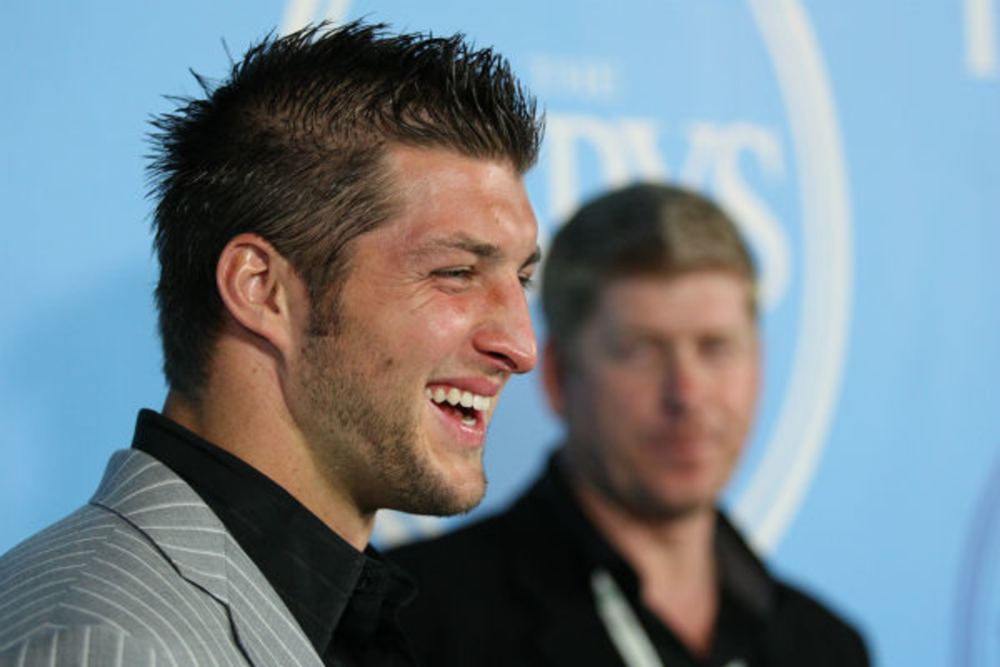It’s Tebow time.
On Monday the Philadelphia Eagles announced that the team had signed Tim Tebow to a one-year contract. The quarterback is known for having a rocky playing history. If he makes the team, this season will mark the first NFL game Tebow has played since 2012 when he was part of the New York Jets, according to ESPN. Prior to playing for the Jets, Tebow spent two seasons playing for the Denver Broncos. He also participated in the New England Patriots’ training camp, ESPN reports, but was released in August 2013.
Tebow’s roller coaster of a career mirrors many of the highs—and lows—marketers face on a daily basis. Here are five things you can learn from the quarterback.
Don’t rest on your laurels. There’s no denying that Tebow had a solid college football career. He also made some great plays for the Broncos. Tell me; who can forget when he threw that game-winning 80-yard touchdown pass during overtime against the Pittsburgh Steelers? At the same time, however, Tebow’s career shows that athletes simply can’t rest on their successes because there’ll always be new competition.
Like Tebow, marketers can’t rest on only their successes. Although Oreo sent arguably one of the best tweets in history and Always launched one of the most empowering campaigns ever, these brands have to find new ways to stay relevant and remain innovative. Otherwise, they run the risk of getting lost in the sea of brands vying for consumers’ attention.
Prove your worth. OK. Tebow is signing on to a team that already has five quarterbacks, which poses a major question: How much playing time will Tebow actually get?
Marketers, too, are constantly playing on a crowded team. Whether they work on email, SEO, or social campaigns, marketers don’t always feel like they get the game time—e.g. budget, staffing, corporate buy-ins—that they deserve.
Just as Tebow will have to prove his keep on the field, marketers have to show their channel’s worth through results. Tebow won’t be starting any games if he throws interceptions, and marketers won’t get a boost in budget or corporate’s attention unless they generate that all-important ROI.
Stay relevant. Even when Tebow wasn’t on the field, he continued to be connected with it, working as a college football analyst for ESPN’s SEC Nation. This move helped the quarterback maintain his profile in the sports community and avoid becoming a has-been.
Marketers take note: This strategy works. Is your brand tapping into influencers, capitalizing on current events, and organically entering customers’ conversations? Get creative; seek out new ways to remain top-of-mind with your consumers.
Don’t be afraid to reassess. Eagles fans can only hope that Tebow used his time off to work on his game. Whether he worked on his passing or his timing, it’s important for all athletes to determine how they can improve by evaluating what they did right last season—and of course, what they did wrong.
Same goes for marketers. If marketers can’t improve their game, it’s time to reassess what’s not working. In a real-time world, marketers are always focused on launching that next campaign. But if they actually take the time to analyze their strengths and weaknesses, they’ll benefit long-term.
Know when to call it quits. Determination is key, but the Broncos, Jets, and Patriots all knew when enough was enough. This season, we’ll see if the Eagles eventually throw in the Tebow towel, too. If so, it may be time for Tebow to hang up his cleats.
Bottom line, marketers have to know when a strategy isn’t working. Although an initiative may have absorbed countless work hours and thousands (if not millions) of dollars, it’s important for brands to recognize when it’s time to call it quits and maybe even head back to the drawing board.








